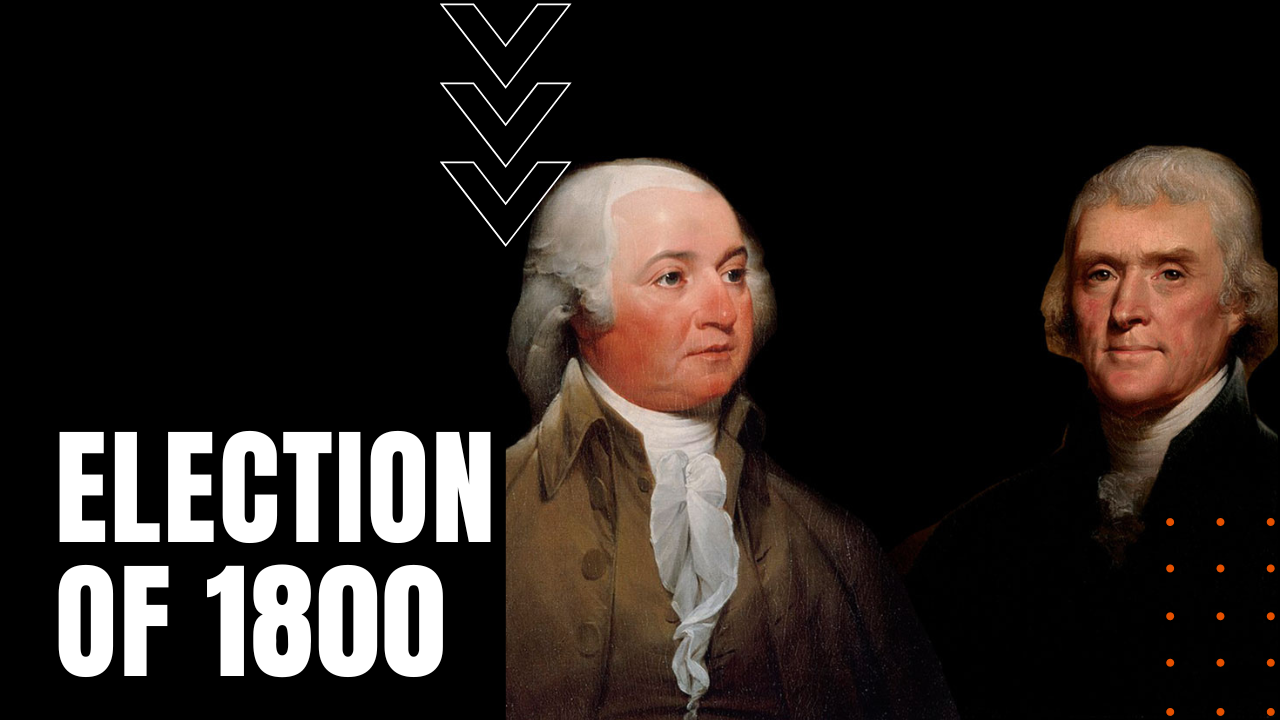Election of 1800

Politics Divided
After the Constitutional Convention of 1787 established a system of electoral votes to determine which two winning candidates would become president and vice president of the United States, the founding fathers soon split into a two-party system based on ideological differences.
As a result, two factions emerged within the Federalist party, rallying behind John Adams and Alexander Hamilton respectively, while the original Republican party, which would later evolve into the modern Democratic party, rallied behind Thomas Jefferson and James Madison.
Fearing anarchic spillover during the peak years of the French Revolution, the Federalist-controlled Congress passed the Alien and Sedition Acts—later signed into law by President John Adams—while the Sedition Act in particular soon came to bear mainly against publishers of partisan newspapers who spoke badly about the party and affiliated politicians they opposed.
The Election of 1800: Adams vs. Jefferson
For the election of 1800, the Federalist backed Adams for president while South Carolinian Charles C. Pinckney was slated for the vice presidential slot, while the Republicans chose Thomas Jefferson and Aaron Burr in the same order.
Both sides spared little rhetoric castigating their opponents—the Federalists painting Jefferson as a naive atheist philosopher bent on destroying the Republic, while the Republicans accused the Federalist of attempting to reinstate the same form of monarchic governance that the nation had so recently rid through the Revolutionary War with Great Britain.
Thanks to a grievous instructional omission by Republican leaders to their state electors, when the electoral votes were finally counted after the popular vote was in, Jefferson, who the Republicans originally envisioned as president, and Burr, slated for the VP slot, were tied at 73 votes each, while Adams received 65 votes to Pinckney’s 64, which in turn called for a runoff vote in House of Representatives between the two winning Republican candidates.
To further complicate the political landscape, the House of Representatives had flipped to the Republicans in the election of 1800, yet the tie-breaking vote would fall on the Federalist-controlled lame-duck Congress, who vehemently opposed both Republican candidates.
Who Won the Election of 1800?
Following three rounds of ballot votes and rising partisan tensions that nearly spilled over into violence, Thomas Jefferson was named the nation’s third sitting president.
Despite overwhelming Federalist disappointment, for the first time in American history, the nation witnessed the peaceful transfer of power from one political party to its opponent, beginning a long American tradition that persisted intact until the 2020 presidential election cycle, making the election of 1800, a divisive yet important turning point in the early years of the American Republic.
